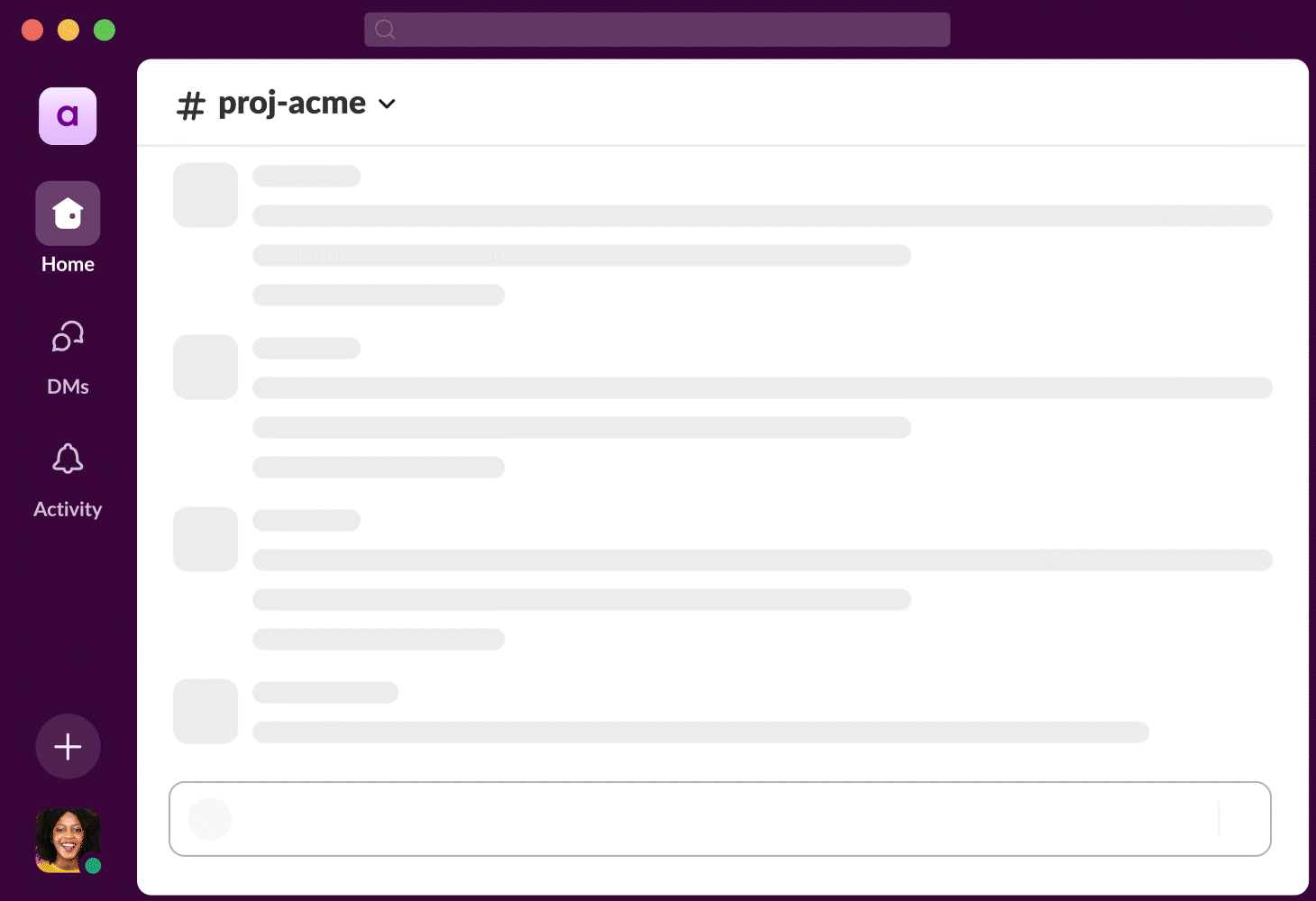Slack Debuts New AI Features, Revamps PricingSlack Debuts New AI Features, Revamps Pricing
Slack’s AI translations and Enterprise Search features become generally available.

No Jitter Brief:
Today, Slack announced several features “coming soon” to its collaboration platform including: AI-powered writing assistance in Slack Canvas, AI-generated meeting notes from a Huddle and AI-generated, user specific action items either from a Huddle or other channels to which the user belongs.
Slack also said its AI translations and Enterprise Search features are now generally available. With a button click, AI translations automatically translates Slack messages into the user’s preferred language (more than 100 are currently supported). Via connections to third-party applications and/or data sources, Enterprise Search enables users to find the information they want via the Slack search bar. Supported systems include Salesforce, Microsoft Teams, Google Drive, Confluence, Box, Jira, Github and others.
This search capability provides a single way for employees to access the information they need without leaving their “flow of work,” a phrase that Slack often uses.
Dive Insight:
Research has shown that moving between applications can reduce employee productivity, so finding ways to keep users within one app for all their workflows has become a goal for collaborative workspace providers. “One of our customers said this feature has reduced their need to access third party websites,” said Sam Messing, VP of Engineering for Slack AI & Search. “So rather than go to Jira, for example, they can stay in Slack and get the information they need and just move along that much faster.”
With much of enterprise data locked away in silos, it can take significant technical and “soft-skills” work to unify that data, or at least access to it, so that people – and AI systems – can use it. “People don’t want to go to Jira, then Zendesk and then Google Docs to figure out different aspects of the same project,” Messing said. “People are expecting a lot more, and they’re expecting us to provide a way to pull all the information together.”
Slack performs federated, real-time search on an as needed basis. When a user initiates a natural language search (illustrated below), Slack will access connected third party systems via APIs and then bring those results back into Slack.
“We are not copying anyone’s data. We use the source permissions of those third parties in real time,” Messing said, noting further that if permissions are changed (e.g., a file goes from public to private), then a repeat search with the same parameters would no longer find the now-private file.

Slack
And because Salesforce Agentforce is available within Slack, an Agentforce AI agent could leverage this search capability, as well. “I could build an AI agent that, once a day, searches Jira for our newest tickets, summarizes them and posts them in a channel,” Messing said. By contrast, a human user would have to initiate that search on their own. Messing also said that Enterprise Search does not work with a third-party enterprise search provider like Glean.
Slack also revamped its pricing and capabilities matrix, detailed here. Free subscribers maintain their current features but now gain access to Salesforce channels. Summarization and huddle notes are now in the Pro plan (pricing unchanged) while Business+ plan pricing increases to $15 (from $12.50). Lastly, Slack debuted an Enterprise+ plan which provides enterprise search, in addition to Slack's full capabilities.
Read more about:
SlackAbout the Author
You May Also Like




